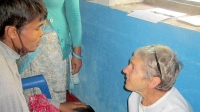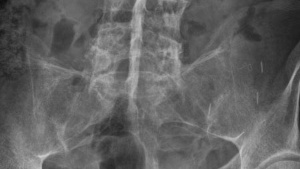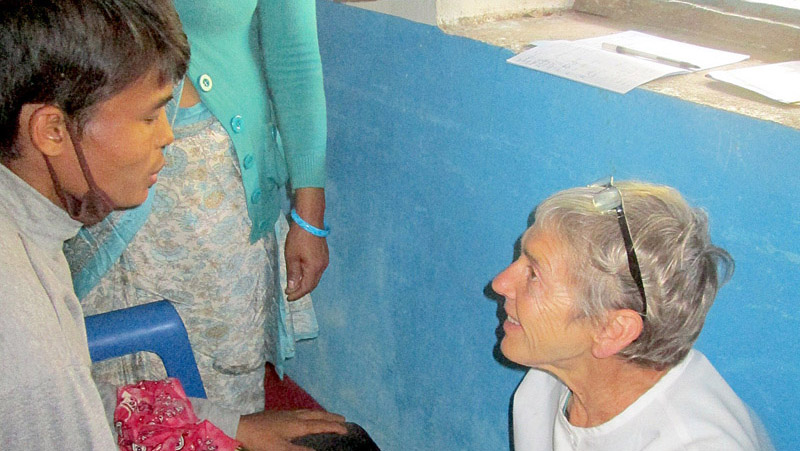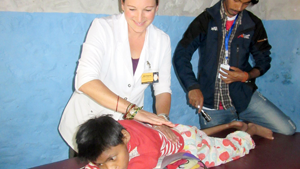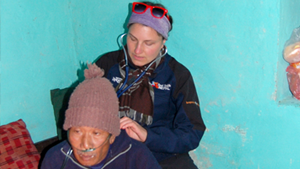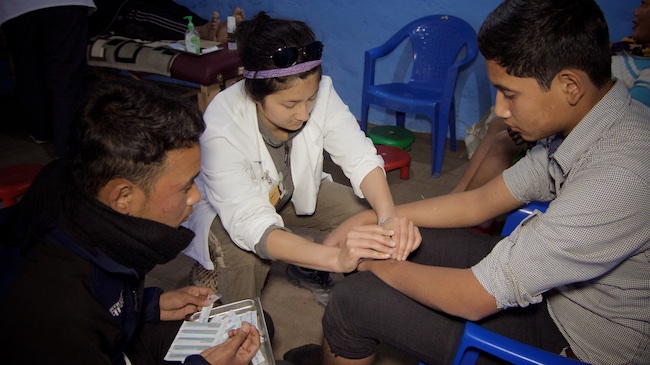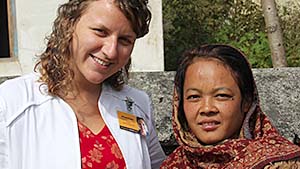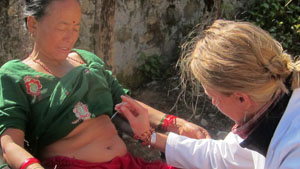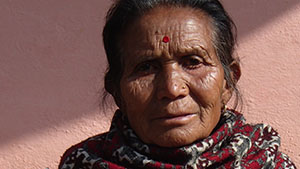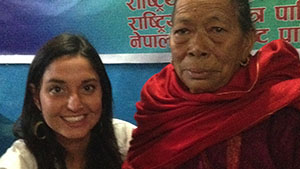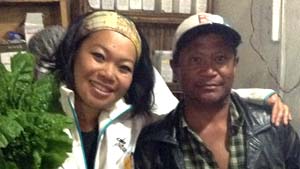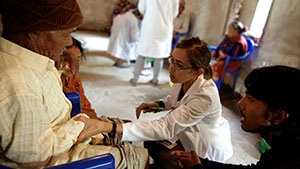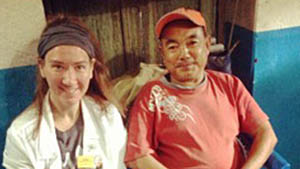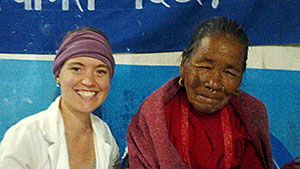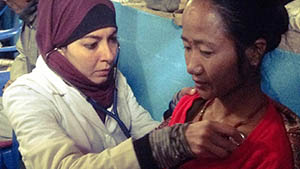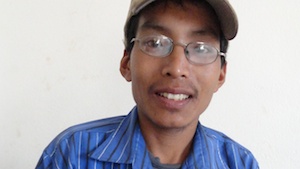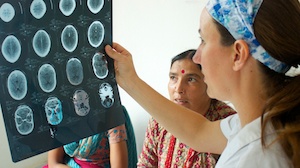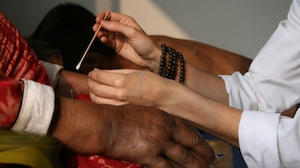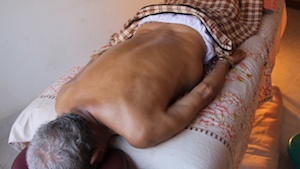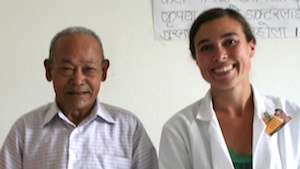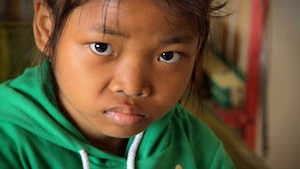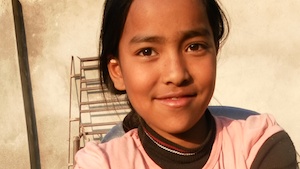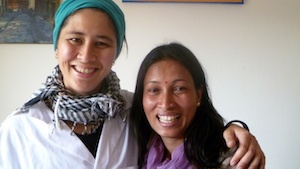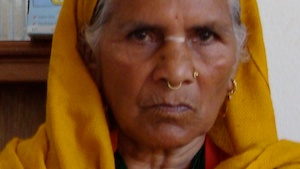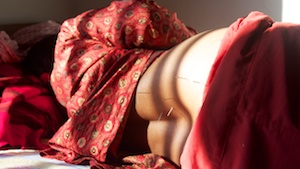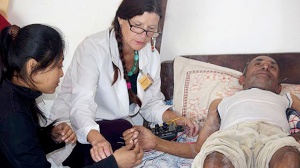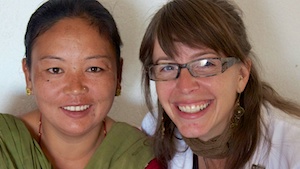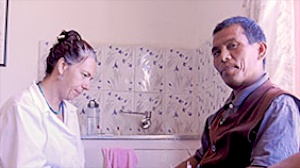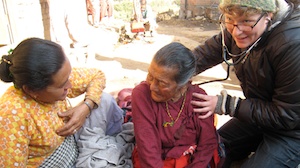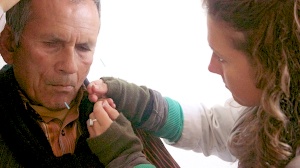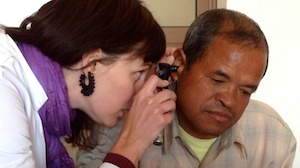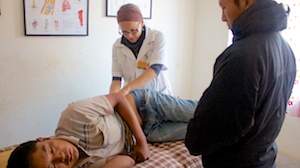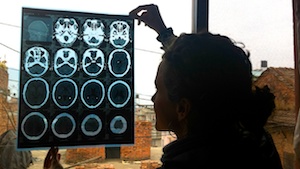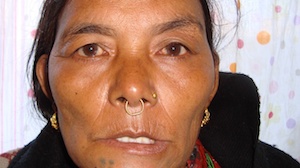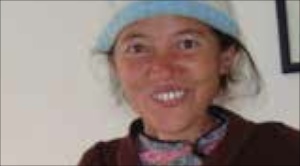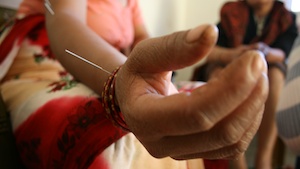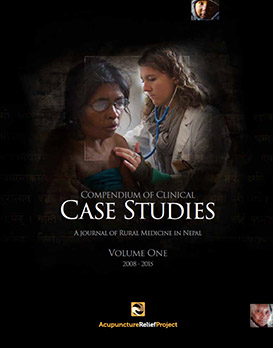Lindsey A Thompson MAcOM EAMP LAc
February 2013
OVERVIEW
25-year-old male presents with low back and sacroiliac pain, beginning approximately 15 months prior to consultation at this clinic, for which he had received a diagnosis of ankylosing spondylitis at a hospital in India. After 18 treatments with acupuncture in conjunction with moxibustion and cupping therapy, the AROM of the back, and degree of pain, significantly improved.
Subjective
Patient is a 25-year-old man presenting with low back and sacroiliac joint pain. The pain began after an injury to the low back approximately 15 months prior to consultation at the clinic. The injury was reported at the initial consultation, which was performed by a different practitioner. Pain is worse with cold and stress, while improved with heat, massage and yoga. The location of the pain is in the low back, sacral region and the mid- to upper back. On the initial visit, pain severity is reported at a 4/10 with pain medications, and at a 7/10 without medication using the globally accepted NRS-11 rating system. At its worst, the pain can be so severe that it interferes with all daily activities and breathing. This is a 7+/10 on the NRS-11 scale and concurs with the patient’s self-reporting. Pain is worse at night, making it difficult for the patient to sleep.
Patient previously sought care at a hospital in India on April 9, 2012, where he underwent laboratory exams, including a c-reactive protein assay and radiographic imaging. The patient was given Indomethacin, an NSAID, to take 50mg QD when pain is at its worst. At the initial consultation, patient is taking the prescribed daily dose.
OBJECTIVE
Patient’s overall health seems to be above average for environment in Nepal. Patient is of slight, lean build, with a cheerful and hopeful demeanor. He is a pre-med student in his 4th year and has a great deal of mental stress revolving around school.
Patient brought in radiographic imaging of the lumbar spine and pelvis taken from anterior to posterior view. The x-ray shows calcification of the anterior and posterior longitudinal ligaments of the lumbar spine with bilateral sacroiliitis. Both of these findings are suggestive of AS. The imaging also shows a reduction in bone density. The image shows normal hip joints.
Examination of the area of purported pain with palpation shows the location of the pain limited to the sacroiliac joint and the lower vertebrae of L4, L5 and S1. Pain at L4, L5, S1 is elicited with moderate to mild pressure. Palpation of the spine demonstrates hardening between the vertebrae of the lumbar and sacral spine in concurrence with the calcification of the longitudinal ligaments shown on x-ray. Lumbar lordosis is reduced with significant flattening of the lumbar spine. Palpable tenderness is felt in the erector spinae, quadratus lumborum (QL) and trapezius muscles. Muscles are hard and rigid upon palpation. Examination of the active range of motion (AROM) of lumbar spine on initial visit is significantly affected. Patient demonstrates 30 degrees flexion of lumbar spine, 10 degrees extension, 45 degrees rotation and 10 degrees lateral flexion.
ASSESSMENT
DX: Initial blood analysis taken at the hospital in India in April 2012 tested positive for c-reactive protein at a value of 12mg/L. A normal level of c-reactive protein is considered <6 mg/L. C-reactive protein is sometimes elevated in patients with active AS. The radiographic imaging that shows bilateral sacroiliitis, calcification of the lumbar anterior and posterior longitudinal ligaments, and the inflammatory back pain worse at night are all considered diagnostic for ankylosing spondylitis. This method of diagnostics is based on the modified New York criteria for AS, as laboratory testing can be inconsistent with AS. The modified New York criteria is as follows: The patient must have radiographic evidence of sacroiliitis and one of the following: 1) restriction of lumbar spinal motion in both the sagittal and frontal planes 2) restriction of chest expansion, adjusted for age 3) a history of inflammatory back pain. The determining factors for inflammatory back pain include onset of paint at < 40 years of age, morning stiffness, improvement with activity, and duration of > 3 months of pain. Since the patient is presenting with 2, possibly 3 of the New York criteria, along with radiographic evidence of sacroiliitis, the patient meets the diagnostic criteria for ankylosing spondylitis according to the Merck Manual.
TCM DX: Liver qi stagnation with wind-cold-damp bi syndrome, cold predominant in the Governing Vessel and Bladder meridians
PROGNOSIS: Due to the presence of calcification in the lumbar anterior and posterior longitudinal ligaments, the prognosis is guarded. Acupuncture will not reverse the pathological tissue changes that have already occurred, but may effectively increase flexibility and decrease pain. Successful management of the inflammatory process in the lumbar and sacroiliac joint may prevent or slow further pathological damage to the spine and surrounding tissues.
PLAN
Treatment principles: Dispel wind, resolve damp, disperse and warm cold, move Liver qi and strengthen the Governing Vessel; Invigorate qi and blood.
The treatment plan is to treat with acupuncture for 2 to 3 times weekly with reassessment at the 10th and 20th treatments. Treatment approach is to use Shaoyang channels to dispel wind and dampness and open up the belt channel (Dai Mai).
The back-shu points for the 6 yin organs are utilized on the Bladder Taiyang channel to nourish blood, yin and the 6 yin organs. The Taiyang channels are also utilized to move qi and blood throughout the back. Points to strengthen and move qi through the Governing Vessel are also used to promote proper bone development in the spine.
Typical treatment: TW5 and GB41, SI3 and BL62 needled contralaterally to activate the belt and Governing meridians, along with bilateral BL58
Alternate treatment: Hua Tou Jia Ji points for L3,4,5 and S1 to move qi and blood through the local spine, or a selection of the following backshu points: BL23, BL20, BL18, BL14, BL13 to nourish the respective yin organs associated with each back-shu point; These points are used to build qi and blood, nourish the spine via the Kidneys, calm
the shen and move Liver qi and Liver blood. Tiger warmer moxa or direct moxa is applied to the SI joint and along the QL muscle, and occasionally the lumbar and sacral spine to disperse cold and warm the channels. Acupuncture and moxa treatment is followed by cupping of the mid- and upper thoracic spine.
For the 1st 2 months of treatment, the patient also received a weekly massage.
OUTCOME
At the 3rd treatment, the patient reported a 60% improvement in back and neck pain. He also had no stiffness upon getting off of the treatment table. At the 7th treatment, the patient reported a decrease in pain medications, but did not quantify the degree of decrease in medication. Between the 7th and 11th treatments, the mid- to upper
thoracic muscle pain and QL muscle spasms fluctuated. At the 11th consultation, the patient reported that back pain was much improved and he was noticing an increase in flexibility. The patient also reported reducing the dose of 50 mg Indomethacin from a daily dose to only 1 50mg pill in the last 7 days.
The patient’s lumbosacral AROM was reassessed at the 13th and 22nd consultations. At the 13th consultation, lumbar flexion was 80 degrees, extension 15 degrees, lateral flexion 5 degrees and spinal rotation was 45 degrees. At the 22nd consultation, lumbar extension measured 40 degrees and lumbar flexion measured 85 degrees. Lateral flexion and spinal rotation were neglected in the reassessment. AROM at the initial consultation was 30 degrees flexion of lumbar spine with 10 degrees extension, 45 degrees rotation and 10 degrees lateral flexion.
Normal degrees of lumbar flexion are 60 degrees, extension 25 degrees, lateral flexion 25 degrees, rotation 30 degrees. At the 22nd consultation, the patient was well above normal degrees of AROM in extension and flexion. On the 13th consultation, the degree of rotation was above normal with lateral flexion still below normal and below that of the initial consultation. It is unfortunate that lateral flexion was neglected to be assessed at the 22nd consultation.
From treatment-to-treatment, the patient reported fluctuations of pain in the muscles of the mid- to upper thoracic spine and intermittent muscle spasms in the left QL. At times, the patient was excited about the increase in flexibility, but disappointed in the slow progress of his case. The patient also expressed disappointment in the frequent return of muscular pain in the mid-thoracic, trapezius and QL muscles. He would spend a great deal of time at a desk, studying, and in a high-stress environment with his medical pursuits in school. The patient typically studied until 3AM, only sleeping from 3AM to 9 or 10AM. The patient’s lifestyle of prolonged sitting, poor ergonomics, late-night studying and stress were more likely to contribute to the frequent return of muscle pain and spasms in the mid- to upper back than to be a complicating factor of AS.
CONCLUSION
The patient experienced significant reduction in pain and increase in AROM on the sagittal plane. It is therefore advised to continue treatment 1 to 2 times per week for the next 4 to 10 months. The increased AROM along the sagittal plane is particularly exciting because the patient developed AROM greater than normal AROM for the general populace. However, the patient lacked improvement along the frontal plane, and it is hoped that, with continued treatment, positive changes in AROM on the frontal plane will take place, as did those of the sagittal plane. The muscular pain of the mid- to upper back improved at each treatment, but each time, returned within a few days. The return of muscular pain was most likely related to the poor ergonomics, prolonged sitting and stress of studying for medical school and exams. The reduction in frontal plane AROM could relate to the frequent recurrence of spasms in the QL. Until the ergonomics of studying can be fully addressed, it is likely that muscles spams will intermittently come-and-go.
At the time of writing this case study, the patient ceased treatment on his own accord, against advice of the practitioner. The patient had a month to study before taking his final examinations. The timing of his examinations may have caused the patient to temporarily cease treatment.
With a complicated illness such as ankylosing spondylitis, a normal course of treatment would involve 6 months to a year of regular acupuncture treatments. Given that the patient had such great successes in sagittal AROM in under 2 months, it is likely that the patient would receive significant benefit from a full course of treatment of 6 months to 1 year.


